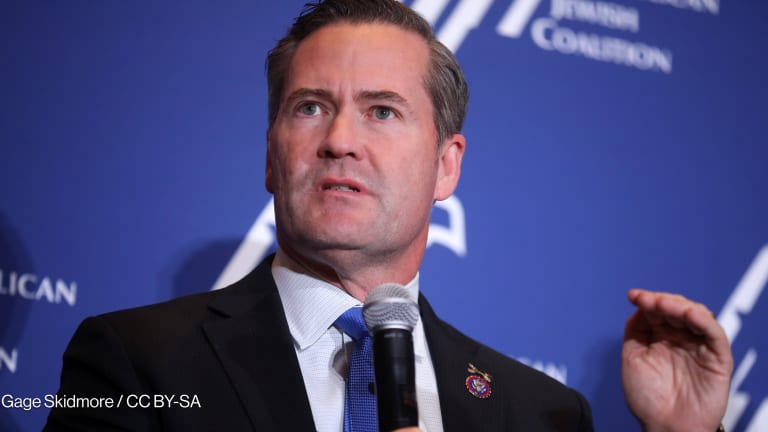
Even in the midst of a brutal war, my people are resilient and creative. They organized an award ceremony for a donkey who carried lifesaving aid to besieged areas. They salvaged discarded soiled banknotes just to survive the economic collapse. They have kept their sense of humor. For instance, when, after months of delay, government employees were finally paid at least 50 percent of their salaries, a joke circulated among them that the money wouldn't even be enough to get through the grocery store door, much less actually buy anything.
Two years into a devastating civil war, those coping mechanism are not enough for the Yemeni people to survive. A relative recently sent me a message that broke my heart: “I have no salary.” This breadwinner of a household of nine couldn’t afford to buy food, and I knew that I was his last resort. Thousands of others don't have a relative abroad that they can turn to. They rely on an international aid system that is no longer working for them.
The 2017 U.N. humanitarian needs overview estimates that more than 8 million people have lost their jobs and income in Yemen since the war started. Civil servants’ salaries have been either completely cut, or have not been paid for months. Programs that used to support vulnerable people living under the poverty line with cash assistance have been suspended since 2015.
Yemen had fundamental economic and development challenges before the war. But two years of conflict have pushed my homeland into a downward spiral toward humanitarian catastrophe. The number of people who were in dire need of assistance before the war was estimated at 14 million people. The U.N. now estimates that 18.8 million are in need of basic humanitarian aid, such as food, water, shelter and protection.
Read related stories:
► Worsening food insecurity, health crisis in Yemen leads humanitarian groups to sound alarm
High-profile humanitarian appeals often fall short. The amount pledged frequently fails to accurately estimate real needs. The amount pledged for Yemen in 2016 was $1.8 billion to address the needs of 13.6 million people. That amounts to $11 per month per person, or around 30 cents a day —- much less than the global poverty rate set by the World Bank at $1.90 per day. Lately, appeals have remained greatly underfunded, usually securing less than 60 percent of money pledged.
At the same time, there is no shortage of funding for arms deals. State parties to the Arms Trade Treaty are continuing to fuel the war in Yemen. For example, France made $18 billion in 2015 from arms trades with Saudi Arabia, while contributing only $500,000 to the humanitarian response. If countries cannot stick to their commitments under the Arms Trade Treaty, a humanitarian tax should be introduced. A humanitarian tax of 10 percent imposed on the French-Saudi arms deals for 2015 would amount to $1.8 billion. That’s equal to the total pledged for Yemen’s 2016 humanitarian response.
But funding is not the only problem in the humanitarian response. The plan also fails to address the protracted nature of the crisis. The Yemen humanitarian response plan for 2016, much like other plans that went before it, was a package of short-sighted reactive measures — instead of proactively trying to tackle the problems Yemen faces. The plan focused on distribution of different types of aid, including tents, food items, hygiene items, and so on. Some have horribly cheesy names, such as dignity kits, that claim to magically restore women’s dignity simply because they contain essential feminine hygiene items.
Meanwhile, programs that have more sustainable impact, such as emergency employment for income generation, were allocated only 3 percent of funding. Although short-term remedies are important, the humanitarian plan should shift its focus to sustainable solutions that lead to increasing the resilience of people.
One of the more glaring omissions from the plan is the issue of children constantly being recruited to fight in the war. More than one-third of the fighters are estimated to be under the age of 16. The Humanitarian Response Plan for 2016 suspended programs aimed at disarmament, demobilization and reintegration of child combatants due to ongoing “insecurity and the absence of a peace agreement.” However, it is well known that DDR programs targeting children can begin before a peace agreement is achieved and should not be part of political negotiations. With verified cases of child recruitment increasing by 35 percent since last year, this issue must be addressed as a matter of urgency.
There are, of course, serious challenges faced by aid agencies in trying to establish and sustain an effective humanitarian response in a time of war when hospitals and schools are bombed, fuel is in short supply, and aid itself becomes subject to local power dynamics. The embargo imposed on different ports have led to delays in importing essential commodities. Many ceasefires have been announced over the past 19 months to facilitate the delivery of humanitarian aid — however, most have collapsed. Humanitarian aid has been confiscated or not granted access. There are areas in Yemen such as Taiz and Haifan that have been besieged for months and there are increasing cases of severe hunger in areas such as Hodiadah.
Yet, despite these restrictions on the delivery of life saving aid, somehow the bundles of delicate leaves known as “Khat,” a stimulant plant that Yemenis chew on daily basis, always find a way through. Where there’s a will, there’s a way! Humanitarian agencies would do well to study and consider using the local distribution chain of Khat and perhaps leverage Khat chewing times, which are basically temporary daily fragile ceasefires, to make their operations more effective. Using local cultures and traditions can be a powerful tool of persuasion.
The humanitarian response in Yemen isn’t working effectively for the people most in need. A new approach seeking creative local solutions is urgently needed. There is a need for a “Humanitarian Plus” plan, where emergency response is coupled with peace initiatives and plans for recovery and development. Waiting for the war to end is no longer a viable strategy.
Join the Devex community and access more in-depth analysis, breaking news and business advice — and a host of other services — on international development, humanitarian aid and global health.








